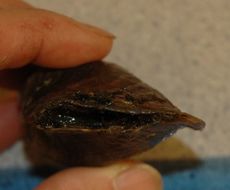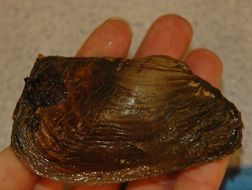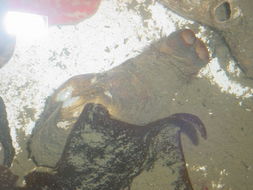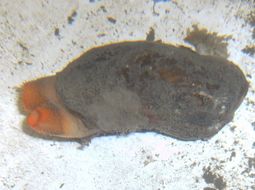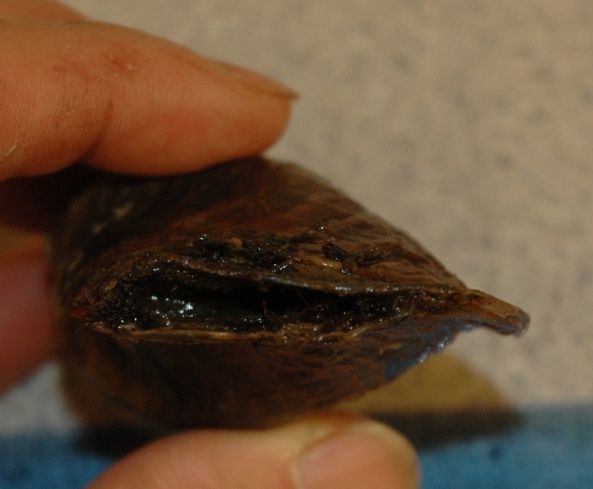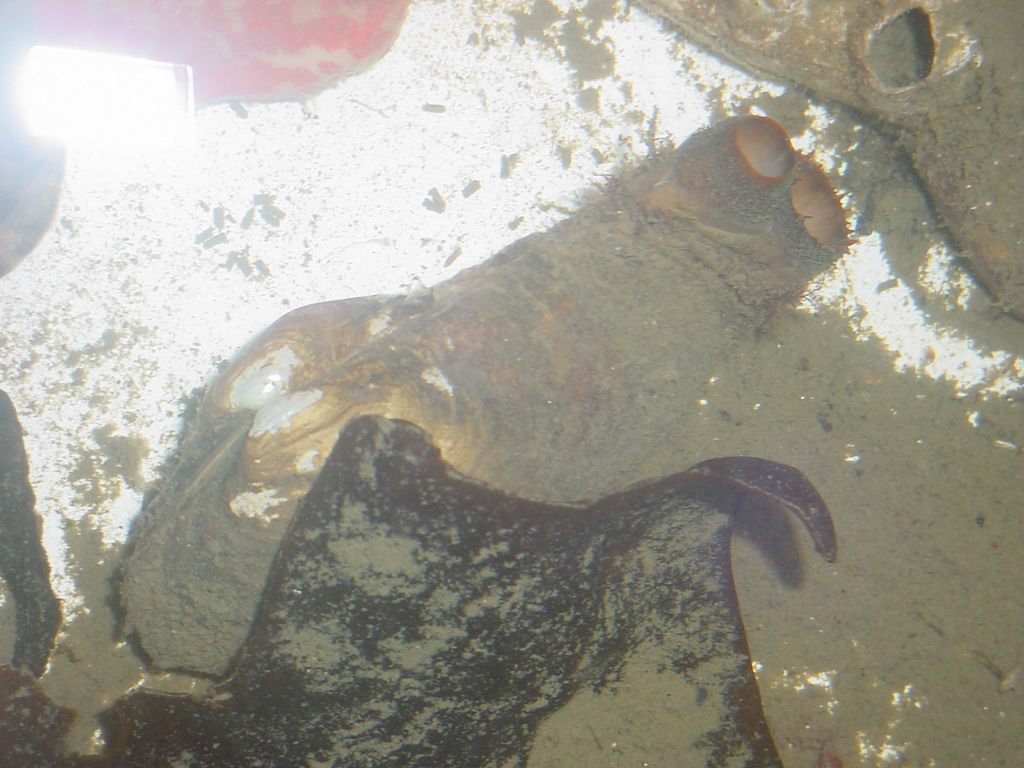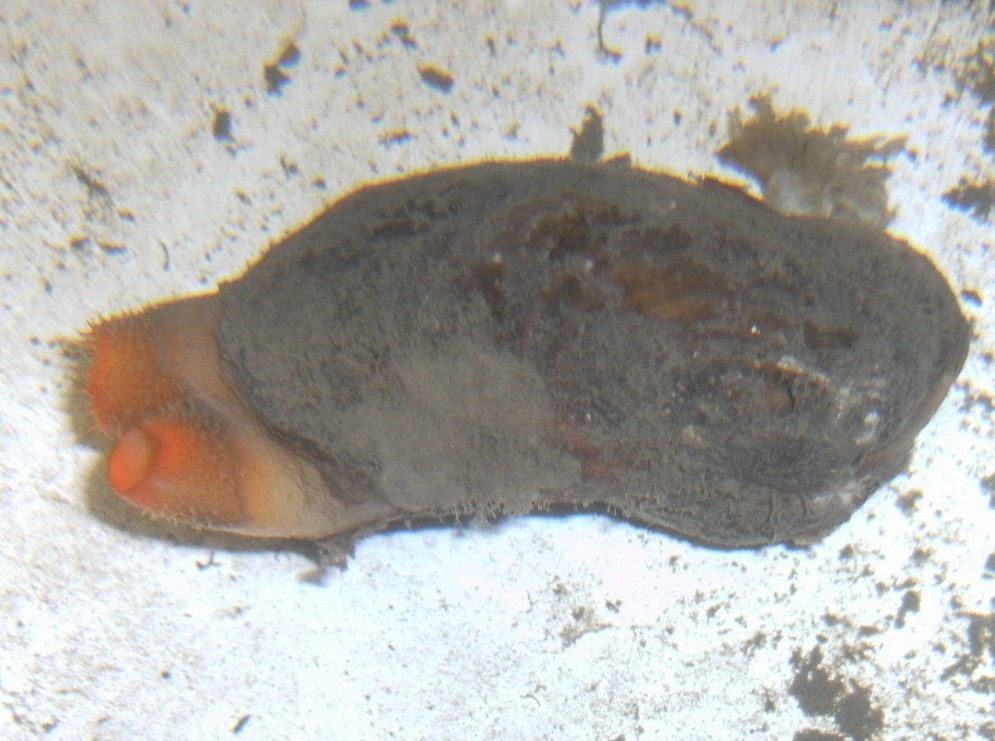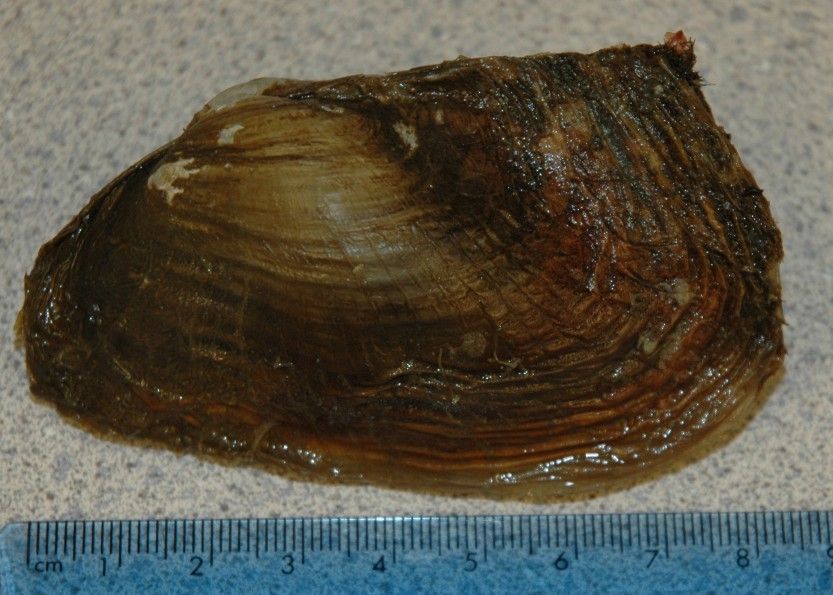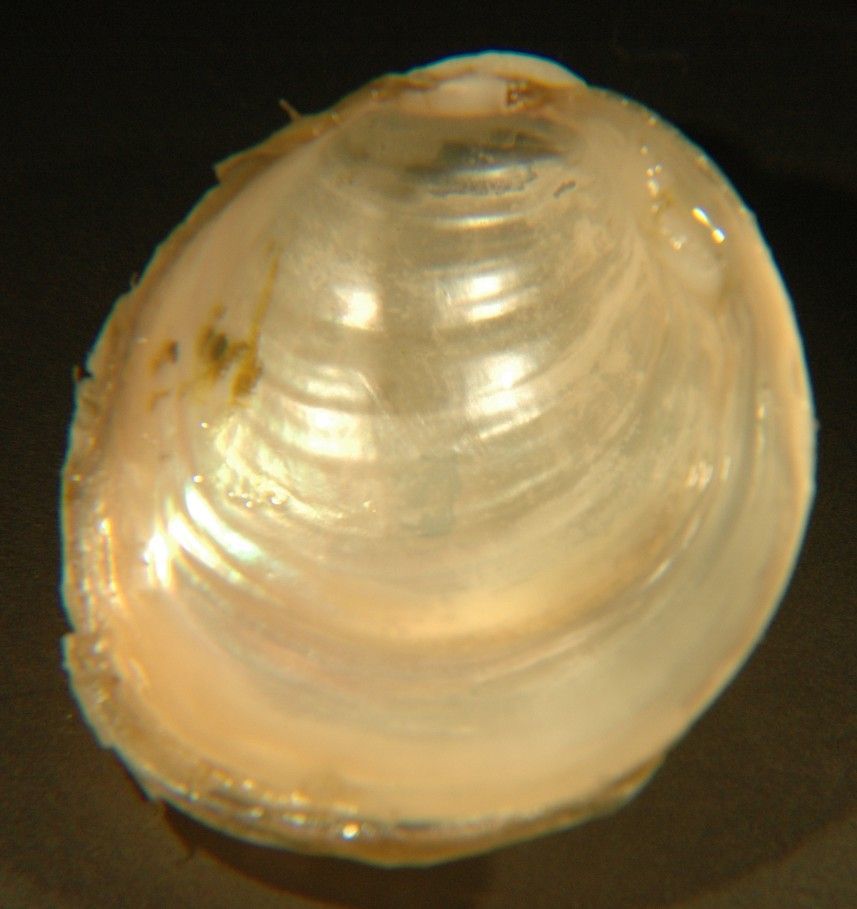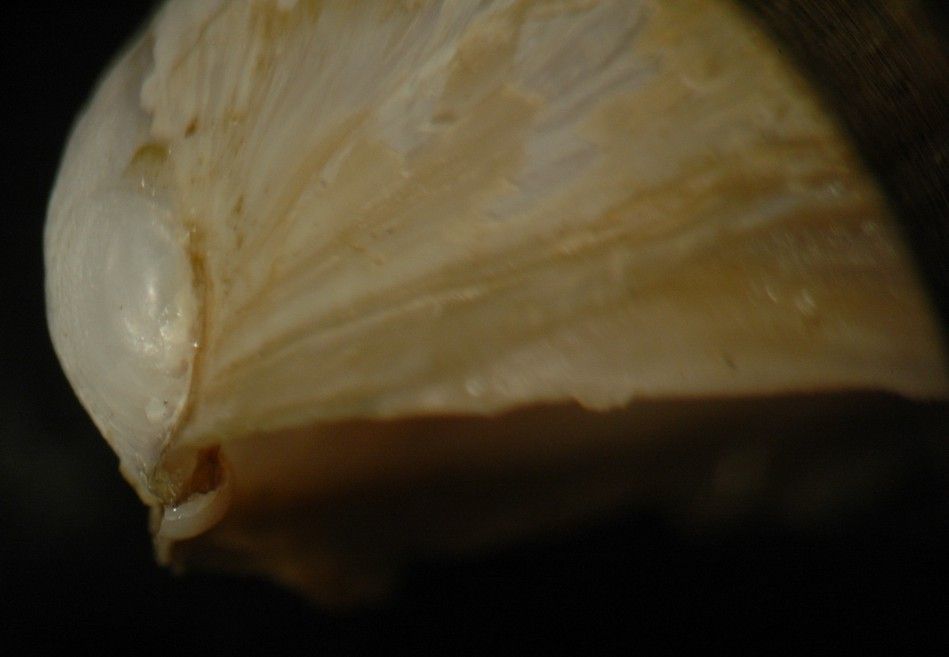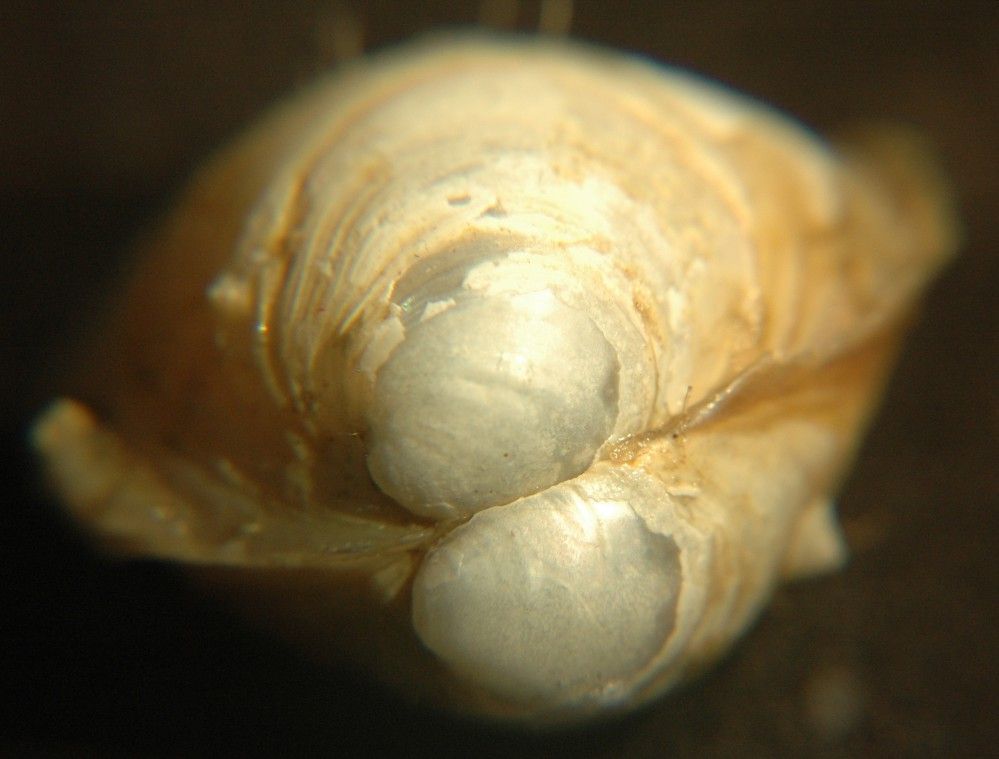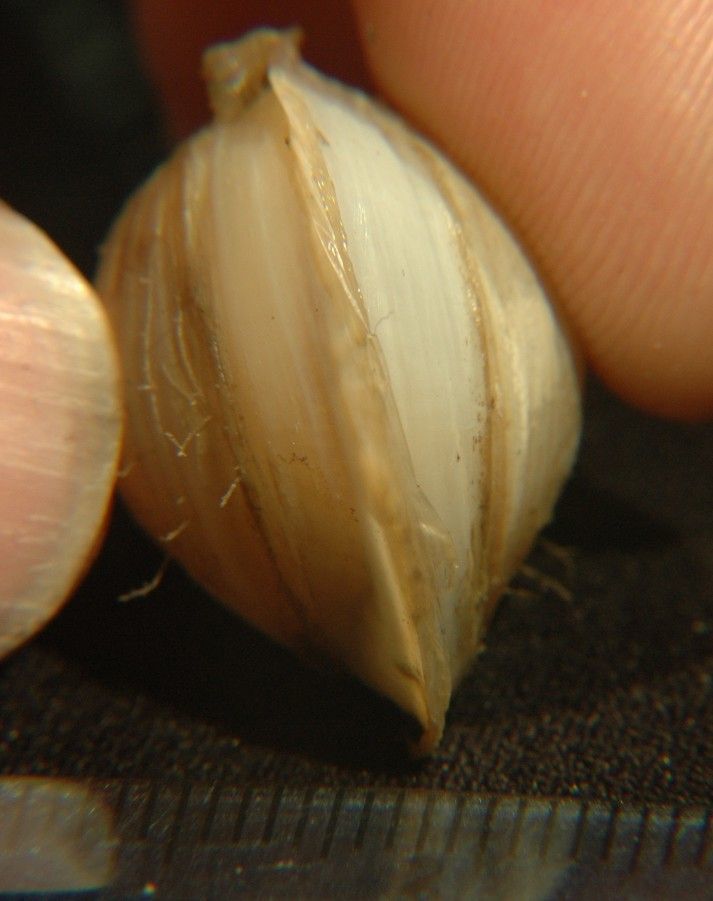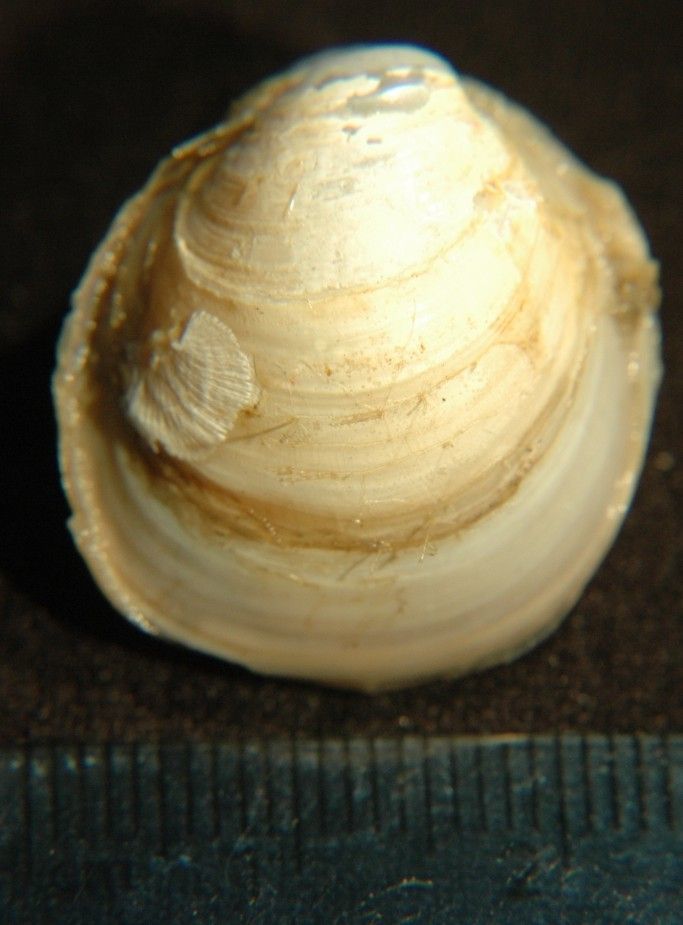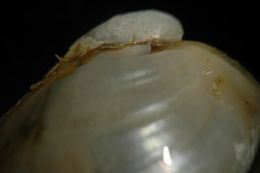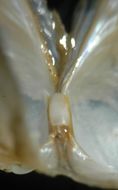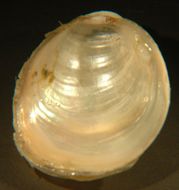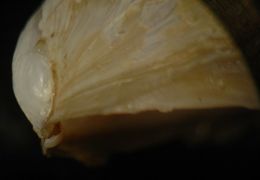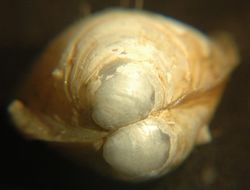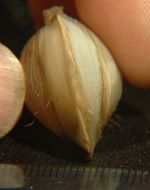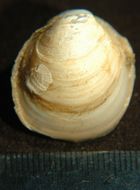-
The gape in the shell at the posterior end can be clearly seen here.
-
View of the right valve. Note the loose periostracum.
-
The siphons are said to be orange, though in this view in our tank they look more brownish-orange or cream colored (compare below). Photo by Dave Cowles, July 2005
-
This individual has siphons which are more orange-colored. Note also the foot projecting from the anteroventral side (top right), which appears to be specialized for holding onto rocks rather than the standard hatchet-shape seen in species which dig in soft substrates. Photo by Dave Cowles, July 2012
-
Entodesma navicula from Padilla Bay, collected near shore on March Point by Jon Mayberry (Photo by: Dave Cowles, July 2005)
-
Species in this family (Lyonsiidae) have no hinge teeth. This is the hinge on the left valve. Notice the calcified shieldlike plate that wraps around the hinge ligament from the left valve.
-
The platelike shield can be more clearly seen in this photo.
-
The interior of the shell is pearly but the pallial line and pallial groove are difficult to distinguish.
-
The shell is fairly inflated, as can be seen in this end-on view of the left valve. The shieldlike plate which wraps around the hinge ligament can also be seen.
-
The species has large umbones which face anteriorly.
-
The shell is thin, and along the ventral edges is mostly yellowish-brown periostracum. In this view of a live individual, the thin, flexible periostracum along the ventral margin has distorted when the animal closed, forming into two nearly parallel plates.
-
Mytilimeria nuttalli found in the low intertidal in Guemes Channel (Photo by: Dave Cowles, July 2005). Identified with the help of Gene Coan


